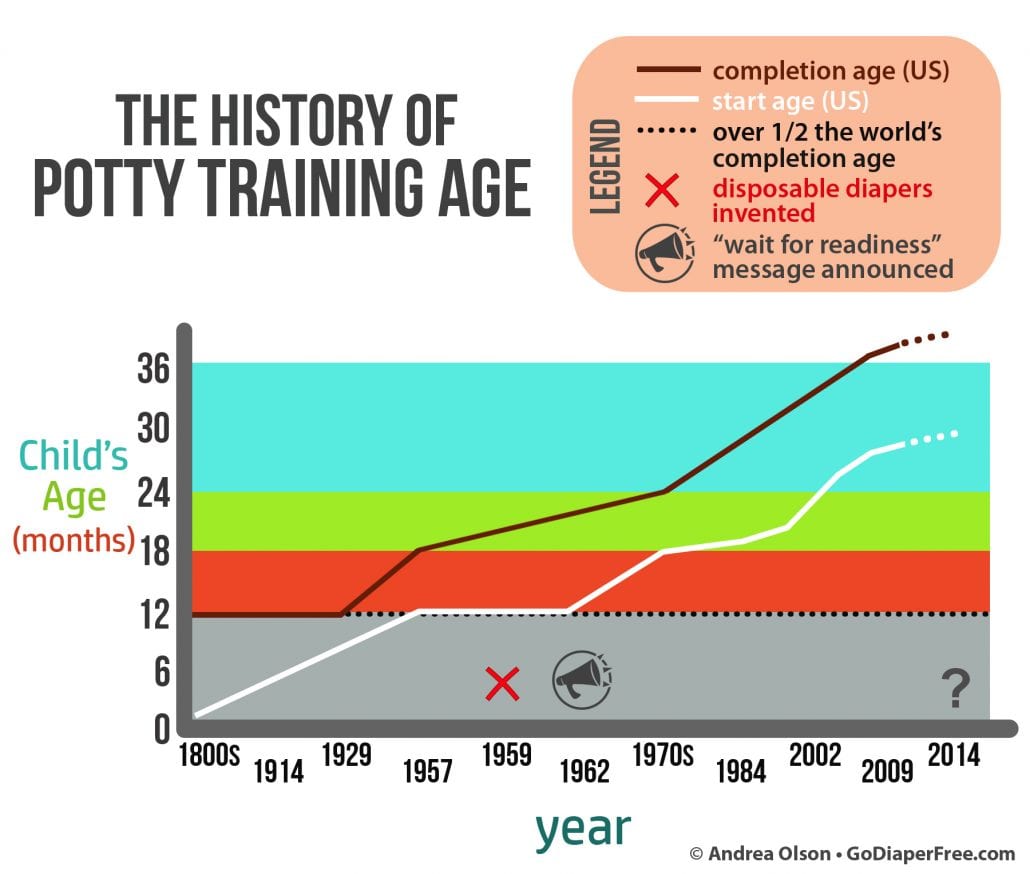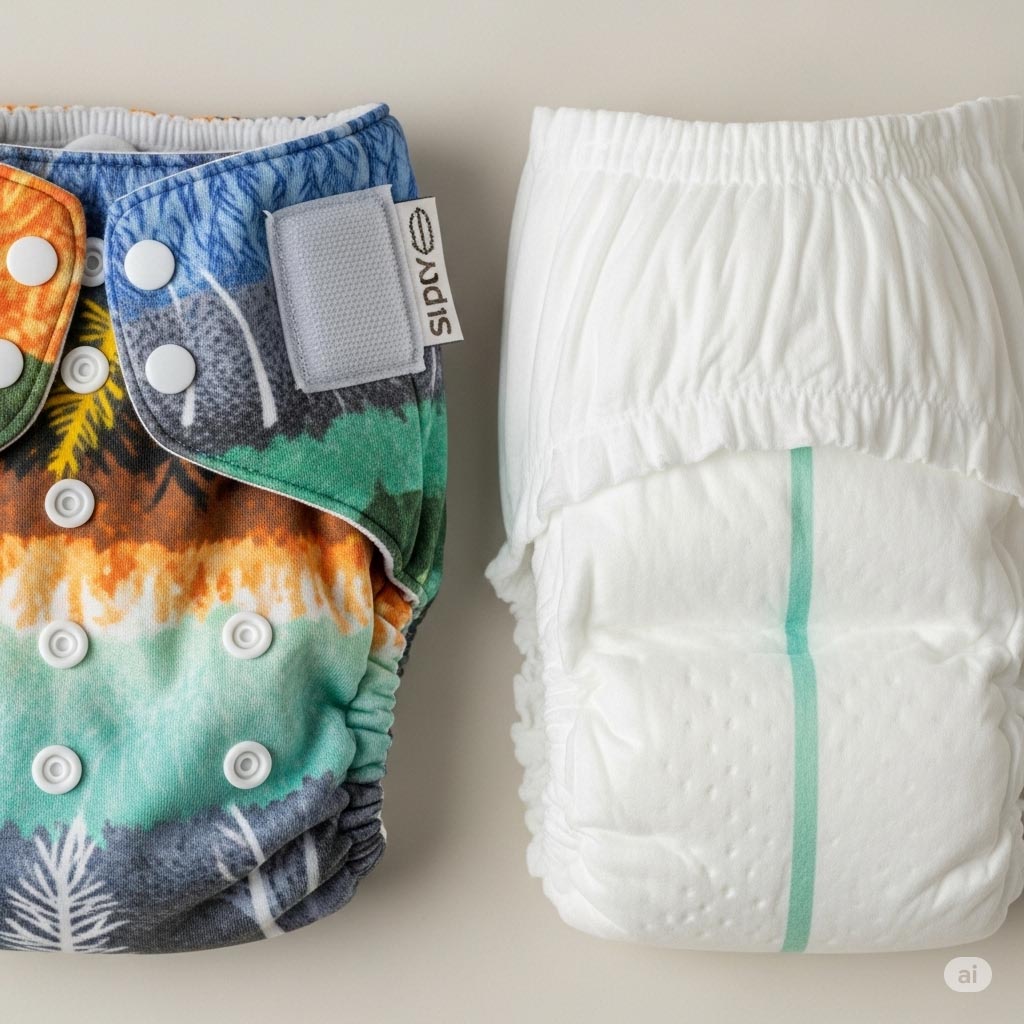As a parent who used disposable nappies/diapers, I always get asked “How long did you do it for?”, “Did you use them with your second child?”, “Was it cheaper?”, and “Is it really that much better for the environment?” But really, what parents want to know is if they can stop feeling guilty for using what they assume is the more wasteful option.
The good news is, yes, you can stop feeling guilty. There isn’t that much difference between reusable and disposable, and disposable may even be more environmentally friendly for your situation. The main variables are your water source, water heater, drying method or dryer type, disposal, and how long until your child is potty trained.
Even if all those variables are strongly in favor of disposable, the labor required is intense, and you need to keep your head above water. You will never be judged by any parent or non-parent. (For more on this, I highly recommend “How to Keep House While Drowning” for more forgiveness.)
I dug deep into this topic, reading the The UK Government’s “Department for Environment, Food and Rural Affairs” 85 page report on the Life Cycle Analysis of single-use and reusable nappies (https://randd.defra.gov.uk/ProjectDetails?ProjectId=20622). This report mirrors similar studies from the UN Environment Programme Life Cycle Initiative which concluded that reusable nappies were the better environmental option based on a meta analysis of all previous LCAs in 2021, and Zero Waste Europe’s comprehensive report on the benefits of reusables in 2019.
Contents
Why you should trust me
For context, I was raised frugal, in hot, dry Western Australia. I currently live in the large, famously cloudy city of Seattle, USA, and also lived in Scotland (prideful of its rainfall and water reserves), humid Vietnam, and expensive, inner-city Tokyo. The question of whether to use reusable is totally different in each location. I have raised two boys with the assistance of grandparents, and au pair, and three different daycares.
Carbon Footprints
The overall UK carbon footprints of each option are not that different from each other. Reusable 344 kgCO2eq vs Disposable’s 456 kgCO2eq. 85% of reusable’s carbon footprint comes from home washing and drying. In our case here in Seattle, we have a gas hot water tank and a gas dryer, narrowing the gap, making reusable nappies less carbon efficient. Were we to use highly efficient heat pump systems, or we used a normal eclectic dryer on our 95% renewable local grid, then reusable would be much better.
The report states that their calculations used “cool drying load as recommended by the manufacturers of the nappies”. Yet my American dryer and washer both have high temperature sanitary cycles, which is what we used on the cotton inserts, further driving up the carbon footprint of reusable.
I am surprised that 65% of the 677 respondents (low sample size!) used entirely line drying or traditional airer. In our freezing Scottish and humid Vietnamese homes, line drying was almost never an option. We needed a powered dryer. The full report does end by saying “The impact of reusable nappies could be reduced by the consumer using more energy efficient washing machines and tumble dryers or by air drying the nappies”.
Disposal
“Disposal of nappies at end of life” (sections 7.8 and 12.10 ) mention that “At end of life some nappies may be suitable for reuse (e.g., for a second child)”, and “Reuse of nappies for a second child has a more significant impact…”. The full report summary ends with “Reusing nappies for a second child could reduce the Global warming potential by ~6.5% and water consumption by 30.9%,” but the report doesn’t explicitly suggest encouraging giving away or acquiring used reusable nappies, which I think it should. Surprisingly, there was little disgust factor for us – all of our nappies were second hand, and we had no issues at all passing them on when we were done.
Switching to disposable part-way
Our children were exclusively fed breast milk, which those with a nose in the know can tell you is not as gross as formula-fed babies. Either way, baby poo will smell foul when solid foods start being introduced (about 6 months old). We used Reusable until he was well on solids, at which point the poo was stinky and solid, which in turn meant more cleaning time, and more disgust. Baby 2 was never put in reusable because reusable was deemed too much work for us, and because we didn’t want to deal with the higher number of rashes.
The middle ground – Disposable nappy collection and composting
Reusable diaper collection and cleaning services used to be a popular baby shower gift for new parents, but technology has progressed, and we have another middle-ground. The report’s conclusion states that “There is currently limited nappy recycling undertaken in the UK.” Here in Seattle, we have Dyper brand compostable disposable nappies (well, “diapers”). They collect the used diapers weekly, and compost them in a special facility as the city compost service can’t take them. Cutting edge services like these, and services requiring economy of scale to run are one of the reasons why I love living in Seattle. A close friend was indeed gifted this product and collection service and swore by it.
Potty Training
Section 4.1.3 of the full report “Data on urine and faeces” gives an average volume of urine, and mass of feaces for different age brackets. I knew what percentile my kids were for weight and height, but now I can say with confidence what I suspected all along – my 17mo has above-average sized poos too!
Realistically though, longer time in nappies is also a significant footprint factor. Reusable cloth nappies are less comfortable than cutting edge disposable nappy absorbers, and children in cloth nappies are potty trained earlier.
I love that they are calling out the rising age of potty training, and though the extended report says “data was accurate and captured a representative sample of potty training”, I think the sample size is low, at just 728. The potty training table (sect 8) is okay, but should have included a historical trend table to back up and quantify the “rising age” claim. Here’s one such chart.

This article from Potty Genius was also a good starting point.
Furthermore, the data is probably highly influenced by cultural background, perhaps giving extra meaning to the phrase “immigrants get sh*t done”. Potty training age differs greatly between countries and cultures. There’s the stereotype that Italian men stay at home until their 30s. I wonder if Italian babies are potty trained earlier or later. There are great articles comparing some countries’ potty training ages with various explanations as to why there is a difference, but I couldn’t find a comprehensive comparison table. There’s definitely an opportunity for a study or global survey there.
The report calls out night-time only usage too, which is a common late potty training stage, reminding us that potty training occurs in stages.
I think that the Summary Report’s conclusion could have made many more recommendations, but the report was overall a great start. The Nappy Alliance asking the UK government to produce a National Nappy Waste Strategy is entirely appropriate.
So are reusable diapers worth it?
The answer is “it depends”. At best, it is worth it if…
- your city’s water is plentiful
- if you’re line-drying / you have a heat pump dryer on renewable energy
- you have an efficient heat-pump heater on renewable energy
- the diapers are second hand
- you plan on passing them on to others later
- you can keep an eye on and handle diaper rash, and change diapers more frequently
- you, assisting family, and/or daycare have the time, energy, and willingness to do this
If those last two variables are “no”, that trumps all other variables.
If 1-5 are in the opposite situation, then disposable are actually better for you. The vast majority of us are in between.
And funnily enough, potty training them earlier has a huge impact too no matter what you choose.





